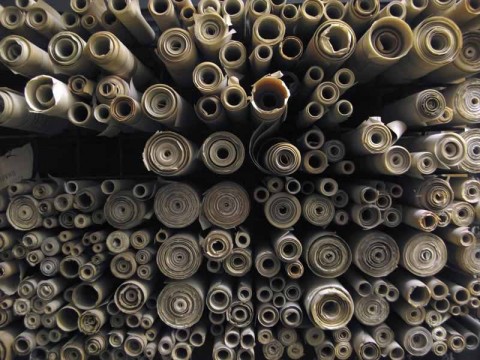An invitation to help the Environmental Education Media Project (EEMP) produce a film for the Copenhagen Climate Change Conference was my crash course in the field of archival storytelling. What I learned is that finding the right stuff is a bit like being a detective. It requires a certain amount of inquisitiveness and perseverance. But it can also be fun, once you’re familiar with the archival landscape.
Today’s filmmakers, thanks to the Internet, have ready access to vast and rich archives, particularly those storing motion picture clips and photos, to supplement their works in many creative ways.
This guide offers some basic tips and tricks on where exactly to look for third-party material—and how to get it—lessons that I learned in tracking down footage for EEMP and, after getting totally hooked on the pursuit of buried visual treasure, through further reading and exploration. I put those skills to good use in making my own short documentary investigating the propaganda campaign that led to the U.S. invasion of Iraq.
Until you realize the wealth of material at your fingertips, you won’t appreciate how useful it can be. Case in point: The image of the antique-looking scrolls at the top of this page comes from Flickr, the photo-sharing site that has become a de-facto image archive for the public at large.
This photo, simply entitled “archive,” was posted on Flickr by a photographer identified as Michele Molinari, and all she asked in return for its usage was that it be attributed to her under a Creative Commons license. I thought Molinari’s shot was the perfect illustration for this guide. But I could just as easily have used it as an interesting visual element in a film.
This blog is all mine. I built it, I own it. It’s not affiliated with anyone or anything else. For better or worse, whatever I say in these pages reflects my own opinion.
Also, I’m a journalist, not a lawyer. Copyright and fair use laws can be tricky. So please don’t take anything in this website as legal advice. The Copyright and Fair Use article offers some helpful resources.
Special thanks to my generous designer friend Jeff Dionise, who caught perfectly the spirit of this research guide with his “Archive Hunter” logo. (Or was it me he was drawing?)
Additional thanks for the mugshot above to my equally generous photographer friend Denny Gainer.
Knowledge about how to acquire third-party material should be part of any filmmaker’s toolkit. After all, “filmmaking is highly collaborative,” as Sheila Curran Bernard and Kenn Rabin say in their aptly named book “Archival Storytelling.” (A good book to learn more about this field.)
Just as the leaps in technology—resulting in affordable sophisticated cameras for shooting and more-powerful computers for editing—have helped increasing numbers of people to become filmmakers, so too has the digital technology of the Internet, with its dazzling collaborative powers, made it possible for them to become archival storytellers as well.




